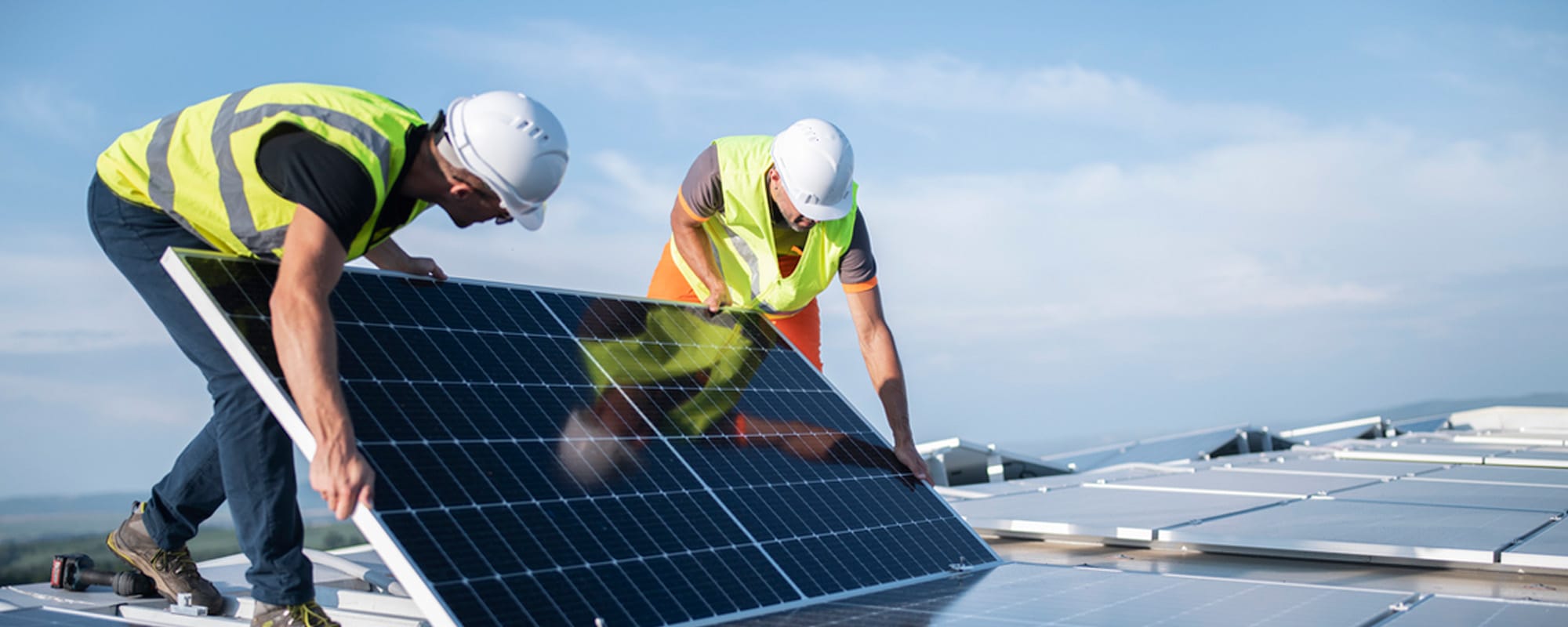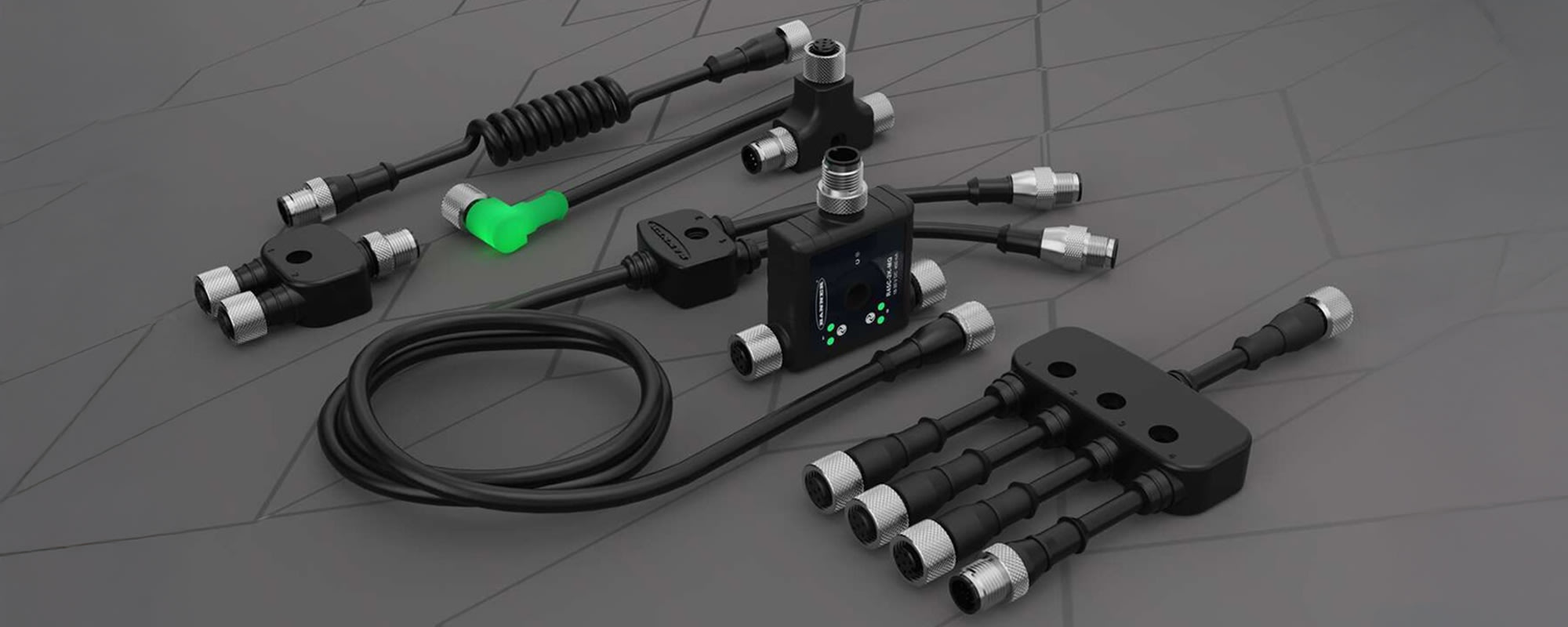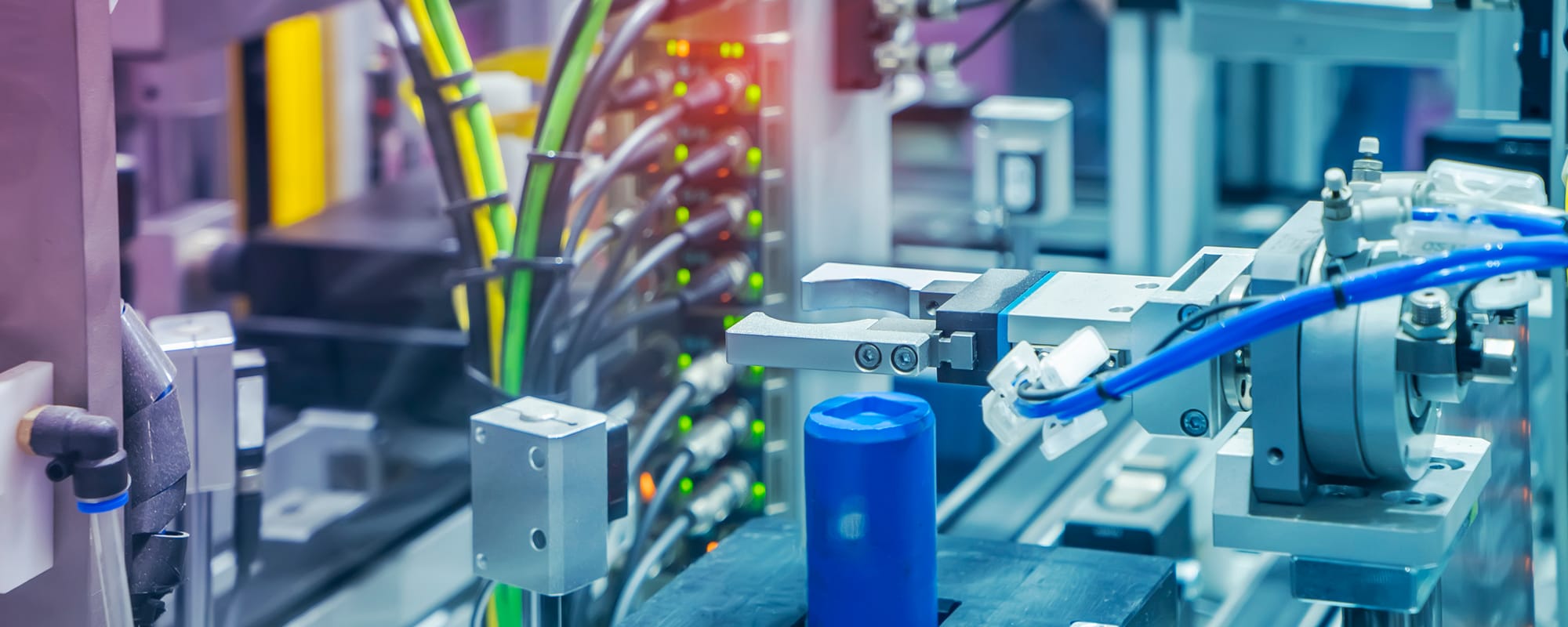Two ABB product experts, Will Hulbert, Product Marketing Manager for contactors, overload relays, and motor starters, and Cassidy Cohen, ABB Product Marketing Manager for disconnect switches, discuss solar energy storage systems, relevant market trends and application challenges, and a few key components of successful systems.
It’s no secret that the renewable energy market has experienced unprecedented growth in recent years. According to the International Energy Agency (IEA), renewable energy grew 50% in 2023, marking the 22nd consecutive year with record-breaking capacity additions, and photovoltaic or solar powered technologies accounted for 75% of these new additions. The IEA also expects this trajectory to continue and predicts that the world will add more renewable energy capacity in the next five years than has been installed since the first commercial renewable power plant was commissioned more than 100 years ago. Expected milestones in this journey include wind and solar power together generating more electricity than hydropower in 2024, solar power surpassing nuclear energy generation in 2026, and wind and solar power generation doubling to account for 25% of the renewable energy market by 2028.
While harnessing renewable energy, like wind and solar power, is definitely one key part of this growth equation, being able to store it for later use is just as vital. To learn more about solar energy storage, we spoke with two experts from ABB, a global leader in renewable energy solutions that specializes in products, digital solutions, and services for the sustainable and resource-efficient electrification and automation markets. Will Hulbert, ABB Product Marketing Manager for contactors, overload relays, and motor starters, and Cassidy Cohen, ABB Product Marketing Manager for disconnect switches, joined us to discuss the intricacies, challenges, and advantages of solar energy storage and introduce a few ABB solutions that offer unique advantages.
Will and Cassidy, please introduce yourselves and tell us a bit about your background.

Will: My name is Will Hulbert. I am a Purdue graduate with a degree in engineering. I started my career at a smaller industrial automation company, where I wore many hats and developed a fascination with robotics, and then moved to ABB, which is a much larger and more dominant global electronics manufacturer.
Since joining the ABB team, I’ve expanded my horizons in terms of the types of applications I get to see. I still get to play in a bit of the robotics and industrial space, but I also get a chance to work with our clean energy initiative, which has been both fun and eye-opening. This role has given me an excellent opportunity to learn more about better energy storage, solar power, and EVs, identify ways to expand our business through our products, and help the world become more efficient.

Cassidy: My name is Cassidy Cohen. I’m a graduate of the University of Louisiana at Lafayette, where I earned a degree in chemical engineering, which is slightly outside of the electrical engineering space.
I started my career with ABB and have been with the company for about seven years now. I worked with transformers in a different division of ABB before transitioning into the electrification group, and for the past year, I’ve been the product marketing manager for our open- and enclosed-style rotary disconnect switches.
Please also introduce us to ABB.
Cassidy: ABB is a technology leader in electrification and automation. We consider ourselves at the core of accelerating energy transition, and we empower our customers across the U.S. and the globe to optimize, electrify, and decarbonize their operations.
We also have a dedicated sustainability team working to enable a low-carbon society, preserve resources, and promote social progress towards a net zero future. ABB is committed to reaching net zero by 2050, and our culture underpins our actions. Through integrity and transparency, we are extending our value chain across the board.
Will: ABB is not only working towards net zero emissions; we’re using our own products to do it. So, we’re not just talking the talk. We’re using the products we build to get there, whether through better energy storage or making things more efficient on the factory line, and we have the products to enable others to do this as well.
You joined us today to discuss renewable energy solutions. Please tell us more about solar energy storage and its role in the renewable energy process.
Will: Worldwide, there’s a movement away from fossil fuels and using fuel sources that damage the environment. One of the most common renewable power sources is solar. It’s so accessible to everyone, and it’s fairly efficient compared to other renewable sources.
During the day, solar power can be collected through the photovoltaic (PV) cells and used to power almost anything. The flaw of solar energy is that it’s not effective at night or when there’s no sun. So, the industry devised a way to store this extra power.
Battery banks can be accessed at any time — day or night — which allows solar power to become much more practical in many applications. Battery banks aren’t specific to solar power, but solar is the most popular way to charge them. You could also use wind, hydroelectric, hydrogen, or even pull from off the grid.
So, in the same way that farmer store their extra corn in a silo to be dispersed out in increments, battery storage systems store extra energy until it’s needed.
How has the process of energy storage changed with the growth of renewable energy?
Cassidy: When it comes to energy storage systems, we’ve seen a trend toward higher DC voltages, especially in utility-scale applications, and substantial growth. Annual revenue projections for battery energy storage in utility-scale applications are expected to triple in the next five years.
Those in the industry are constantly pushing for new or better ways to increase their system efficiency. They want to find components — including switches, contactors, and multiple-case circuit breakers — at higher voltages and with embedded protection features.
In recent years, consumer pressure has elicited a corporate shift to more renewables, and the effects have been twofold: Not only is there more growth, but new investment as well. The Biden administration also plans to drive a rapid uptake of renewable energy with $2 billion for clean energy projects and another $6.5 billion in support of clean energy. So, we’re anticipating a lot of growth and investment from big players supporting this growth.
How has digital technology changed the sector?
Will: Digital is the next piece of the puzzle. We can increase the power we can get out of our system, but the next step is making it more efficient. Digital is how we do that.
Data is really impactful, and energy management software can provide users with insights that can help them make cost-saving decisions quickly and efficiently.
Over the past 10 years, Industry 4.0 has been harnessing the power of digitalization. We have sensors for seemingly everything, and we can gather all that data into software programs, meta-analyze it, and discover user-specific trends.
What’s happening in one person’s system may not be the same for others, though, so digitalization allows us to get hypergranular and enables centralized system control. Users can leverage energy storage data to identify potential issues ahead of time, optimize preventative maintenance schedules, monitor safety, see energy usage, and much more.
Digitalization also gives people the power to make more educated decisions, which can translate into less unscheduled downtime, better use of resources, more cost-effective and efficient systems, and higher profits at the end of the day.
What are some of the unique challenges of solar energy storage?
Cassidy: When we’re looking at the challenges, we can put them into four main areas:
- A limited portfolio of product offerings on the higher end of the voltage range, including 1,500V and above. There’s not a huge variety of products that meet the 1,500VDC requirement. There’s definitely a need, but there are still a lot of product gaps. We’re now seeing the market trend into even higher voltages, such as 2,000V.
- Space constraints. There’s often a limited amount of space. Each application comes with specific capacity requirements and need products that fit within both those constraints and the available space.
- Competing interests. We see companies hoping for improved system performance but also wanting to reduce costs. Many want to be able to monitor, look at metering data, and analyze applications without investing in digitalization technologies. And while there are certainly cost-effective energy storage technologies, this is yet another instance in which the old adage, “You have to spend money to make money,” proves true.
- Vulnerable and sensitive equipment. Energy storage systems have many safety and protection requirements. With battery energy storage systems and electricity, protection gear is often needed for those who work on the equipment. So, having the people and products in place to support the equipment and meet those requirements is crucial.
Please tell us about some of the components essential for solar energy storage.
Will: When building or maintaining an energy storage system, there are several key components. Beyond the batteries themselves, switches and contactors are critical for system safety.
Contactors and switches are utilized as cutoff mechanisms. If a battery bank reaches capacity or maintenance needs to be administered, the system must be powered off safely. Switches feature a physical handle that can be turned to power a system on or off, while contactors can be controlled remotely via PLC or other input voltage. Both can be found on the AC and the DC side, assuming an inverter is nested into the battery storage system.
What’s unique about ABB’s selection of solar energy storage products?
Will: In a market as popular as battery energy storage, it’s not uncommon to find many different options for your components. So, it’s critical to understand how to identify and select quality components, because the last thing you want is to choose something solely on cost and then end up dealing with frequent downtime due to failing parts.
Downtime is a huge issue for battery and solar energy storage products because they’re usually linked to some sort of critical power need. In a hospital, for example, if the main power goes out, you need to have backup power so those on life support can maintain quality of care.
ABB is an industry leader in developing components for advanced technologies and higher-voltage applications, including clean energy technologies, and has a proven track record of quality backed by decades of experience.
ABB also offers an EcoSolutions product portfolio that provides full transparency of environmental impacts across the product lifecycle. These products are marked and validated with a third-party source to show that they have a low environmental impact, and we offer a wide range of digital solutions, like the ABB Ability Energy and Asset Manager cloud solution, that ties everything together. So, we provide customers with proven-quality products as well as key insights into their systems and the potential to unlock hidden profit that wasn’t necessarily visible or available before.
Please tell us about ABB’s OTDC Disconnects.
Cassidy: OTDC switches are made specifically for DC applications, including solar energy storage and other renewable energy applications. They range from 100A to 1,000A and go up to 1,500VDC for UL or up to 2,000VDC for infrastructure as code (IAC) applications.
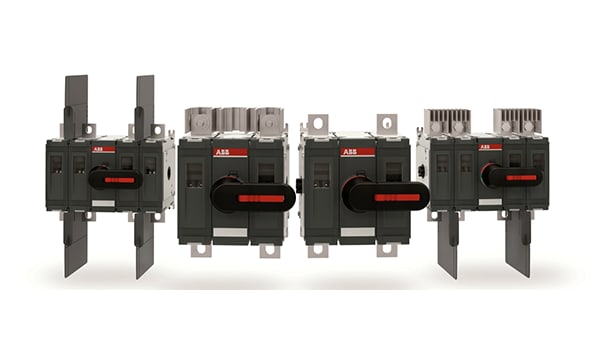
We also offer a special ESS version for the higher interrupt ratings. A 10kA interrupt rating is relatively standard, but special applications sometimes require a higher rating. So, our ESS type OTDC switches go up to 40kA.
In addition, our switches are IEC and UL rated and feature EAC and CCC approvals.
Other benefits of OTDC Series switches include:
- An optimized arc chamber with a long opening angle through a patented dual magnetic braking.
- An inspection window that gives users a direct view of the contact position.
- A symmetrical pole design that enables independent polarity in the switch.
- The availability of both grounded and ungrounded models.
Please introduce us to ABB’s contactors.
Will: Contactor technology has been around for more than 60 years. In their simplest form, contactors are essentially an on/off switch. They provide a level of protection and safety for more expensive equipment downstream. In the case of energy storage systems, it would be the batteries. In other cases, it might be a motor or other power source.
A contactor works via the use of a control circuit and a main circuit. The control circuit is energized, which magnetizes a coil that opens or closes depending on your orientation and allows a current to flow through. The main circuit is what is provides that power downstream.
Contactors also provide a safe cutoff mechanism and can be both automated and affordable.
I think the biggest differentiators for ABB contactors are the availability, quality, and the ability to select exactly what you want. The quantity and range of features available mean you can get very granular with what you’re looking for. For example, we offer both DC and AC options, which work on either side of an energy storage system. So, you can choose from a huge range of contactors for exactly what you need, from frame sizes to voltages.
ABB’s newest contactor technology is the AF Contactor family, which utilizes an electronically controlled coil (although, we do have a subset with the traditional electromagnetic coil) and offers multiple benefits over conventional alternatives. Advantages include:
- The option of screw, ring tongue, and push-in spring terminal connections, the latter of which makes it extremely quick and easy to establish reliable wiring connections.
- The ability to over-bridge voltage drops and sags to improve uptime.
- High energy efficiency — up to 80% less than competing contactors.
- Built-in surge suppression.
- Just four coil variants cover 24–500VAC and 20–500VDC, which enables compatibility with standard network voltages all around the world, as well as optimizes logistics and cuts administration costs.
- A dedicated 24VDC coil that enables direct control by PLC outputs greater than 250mA and has a low holding consumption of 1.7W or less.
- Mirror and mechanically linked contacts.
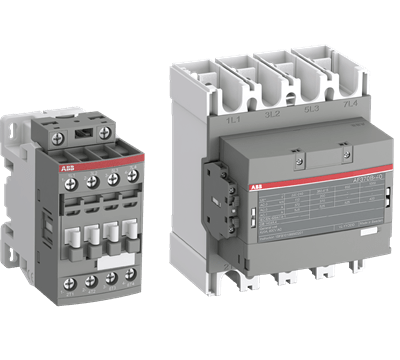
Is there anything else you’d like RS customers to know about ABB or its renewable energy solutions?
Cassidy: One of the things I’m most excited about is the direction the renewable energy market seems to be taking regarding the need for higher-voltage products, as it will be interesting to see what the field does to start meeting the need for 2,000VDC. Another is the amount of interest coming into this space. Currently, only a small number of customers with a history in the renewable space are actively buying products for battery storage systems specifically — or at least not on a mass scale. However, we’re starting to see more and more businesses express the desire to enter the space.
There’s growing interest and so much that could happen. It’s exciting because we’re in the middle of a developing time, and we’ll get to be a key part of implementing these changes.
ABB can offer essentially everything needed for these applications. We offer an extensive range of fully integrated equipment with measuring and monitoring systems. We have products stocked at our trusted distributors for immediate shipping, and we’re always working to push the envelope while keeping customer feedback in mind.
Will: Like Cassidy said, we’re in the middle of an energy revolution. There’s been a move to adopt a socially responsible mindset to protect the planet and we’re seeing that being put into action, which is encouraging and empowering to be a part of.
We’re also seeing companies that historically might not have had the best reputation become leaders in using renewable energy sources, which is fantastic.
Growth and development have been relatively quick, starting about 15 years ago and picking up more in the last five to eight years. To see more and more businesses actively taking on this social issue is very exciting, in my opinion, and here at ABB we get to be in the middle of it, which is even better.
RS and ABB Partnering Together to Ensure Product Availability Quickly
In a fast-growing market like renewable energy storage, businesses need to know they can rely on the products they choose — not only to do the job but also to be available when they need them. The relationships between companies like ABB, which manufactures high-quality electrification and automation products backed by decades of experience, and RS, which can get them to customers quickly and on time, result in unmatched service.
For more information about the RS portfolio of ABB energy storage solutions, including contactors and switches, or the complete RS portfolio of ABB products please visit the links embedded here. For assistance identifying, procuring, deploying, and maintaining ABB components for your renewable energy storage needs, please contact your local RS representative at 1.866.433.5722 or reach out to the RS technical support team.
